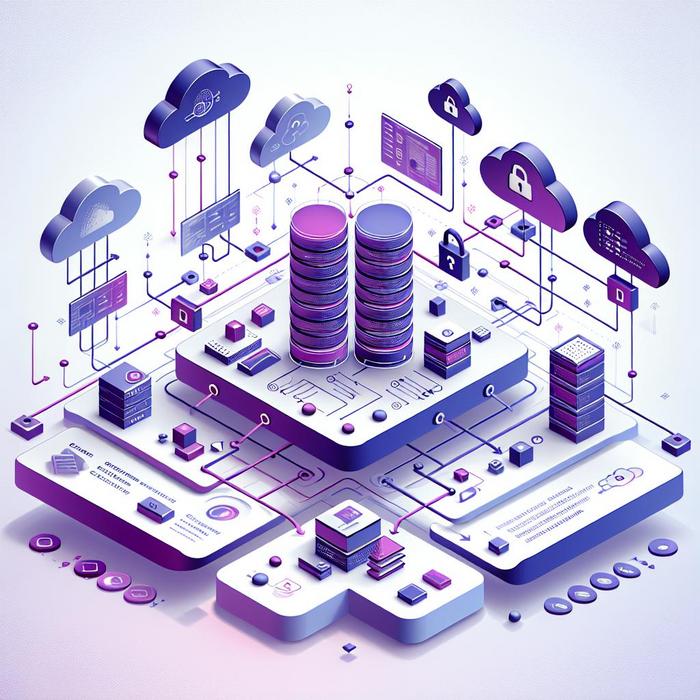Table of Contents Hide
How Can Data Observability Software Revolutionize Data Management?
 6 MIN. READING
6 MIN. READING
Is Data Observability Software the Future of Advanced Data Solutions?
Without a doubt, data is the lifeblood of the digital landscape, driving strategic decision-making for CIOs, CTOs, data architects, and database administrators. But how do we ensure that data is accurate, available, and insightful? Enter the new game player: data observability software. But what exactly is this and how can it revolutionize data operations for high-level executives?
Unpacking Data Observability Software
Data observability software provides a panoramic view into the operational health of your data assets, a critical ingredient in decision-making and strategy formulation. Think of it as a sophisticated scanner that uncovers data anomalies, inefficiencies, and bottlenecks. By flagging potential issues at their root cause, it ensures a seamless flow of accurate and timely data.
For instance, if you look atMonte Carlo’s definition of data observability, you’ll see it as a method to provide superior visibility into all data elements – from raw forms to processed outputs. This holistic view includes easy access to data across disparate sources, eliminating the need for data movement or replication, thanks to the prowess of database virtualization.
Comparison: Traditional Data Management vs. Data Observability Software
Executives involved in strategic data decision-making often grapple with critical challenges – from data provisioning for testing, development, and analytics to ensuring compliance with data regulations. These complexities are amplified when companies use traditional data management methods that often operate in silos.
On the other hand, data observability software fosters a unified approach. By providing insights into data quality, freshness, distribution, and lineage, it enables you to preemptively resolve issues. These capabilities are vital for executives in large companies where data is voluminous, diverse, and often dispersed.
Further, data anonymization, a key aspect of data regulation compliance, becomes more manageable with data observability software. It leverages a technique known as data masking to guard sensitive data, offering an additional layer of security.
Data Observability Software: A Strategic Advantage
Data observability software goes beyond maintaining data accuracy. It helps create an environment of trust, transparency, and control, enabling executives to harness data as a strategic asset. Here’s how:
- Cross-functional alignment: When data issues are surfaced in real-time, teams can collaborate effectively to address them promptly, ensuring efficient data operations.
- Data-driven decision making: With a clear view of data health, executives can make decisions backed by reliable and up-to-date information.
- Enhanced compliance: Data observability software simplifies the process of data anonymization and data governance, ensuring adherence to stringent regulations.
These advantages amplify when coupled with advanced data solutions like efficient test data provisioning techniques and transformative test data management strategies.
Choosing the Right Data Observability Software
The choice of data observability software is a strategic decision that can significantly influence your organization’s data operations. Consider these factors:
- Data diversity: Choose a solution capable of handling a wide variety of data types and sources.
- Anomaly detection: Closely examine its ability to detect outliers and anomalies in your data.
- Integration: Ensure it integrates seamlessly with your existing data architecture.
A comprehensive review of the best data observability tools sheds light on these aspects and helps inform your choice.
The Next Step in Data Evolution?
The evolution of advanced data solutions continues unabated, with data observability software marking the latest leap forward. As an executive involved in strategic data decision-making, adopting such innovations can empower you to optimize your data operations, ensure regulatory compliance, and drive data-driven decision making.
The future of data management is here. Are you ready to embrace it?
Navigating the Landscape of Data Observability Software
What are the advantages of implementing data observability software in your operations? The answer lies in the enhanced visibility and insights, with accuracy and availability becoming by-products of this revolutionary technology.
Data observability software successfully bridges critical gaps in traditional data management methods. The traditional approach tends to be siloed, limiting cross-functional alignment and inhibiting agility in decision-making.
Conversely, with data observability software, seamless and real-time access to data insights becomes possible, allowing teams to take prompt action when data issues surface. This bolstered connectivity fuels a high degree of integrity and transparency in data operations, driving strategic alignment across functions.
Subsequently, SLAs compliance, especially regarding risks associated with data mishandling, becomes streamlined as high-level visibility into the data health enhances preventive measures. This proactive approach to data compliance is both time-efficient and cost-effective.
Streamlining Data Observability
The realm of data observability unlocks the potential of practical insights. Rapid detection of data hurdles, coupled with real-time anomaly alerts, equips high-level executives with opportunities to address and rectify discrepancies early. This efficiency significantly reduces the costs associated with fixing issues at later stages.
A deep dive into the beneficial attributes of data observability tools highlights the capacity for these platforms to streamline data operations.
Greater Data Security through Anonymization
In compliance with regulatory requirements, organizations are bound to protect sensitive data, with significant penalties for non-compliance. However, data anonymization resolves this concern by masking potentially vulnerable or personal information.
Effective and responsible data anonymization cuts through the noise in the privacy landscape, significantly reducing the risks tied to sensitive data handling. Strategic decision-makers such as CIOs, CTOs, and data architects thus gain a newfound level of confidence in the security landscape of their data assets.
Enhancing Integrative Capabilities
Data observability software places a significant focus on a system’s integrative capability, emphasizing the seamless consolidation of data from diverse sources. This cohesive approach to data operations empowers teams to draw from the true potential of their collective data assets.
When considering the implementation of innovative data solutions, scrutinizing the software’s integration capabilities becomes crucial. The right data software should fit into your existing structure like a final puzzle piece, thereby creating a harmonious landscape for information flow. The agile merging of systems not only streamlines operations but also enhances productivity.
Embracing the Future of Data Operations
The swift adoption and adaptation to technological advancements define the thriving players on the digital landscape. For high-level executives, the incorporation of data observability software is a strategic decision that can drive business success.
Greater visibility, integrated operations, enhanced compliance, and stronger security are key benefits brought forth by data observability software. With a sturdy understanding of these advantages, strategic decision-makers are positioned to drive their companies into the future.
Explore the realm of innovative data observability tools and step into the driving seat of your data operations. The future of leadership in data is holistic, integrated, and innovative. It’s time to leverage your data to its full potential. Are you geared to succeed in the digital revolution?


